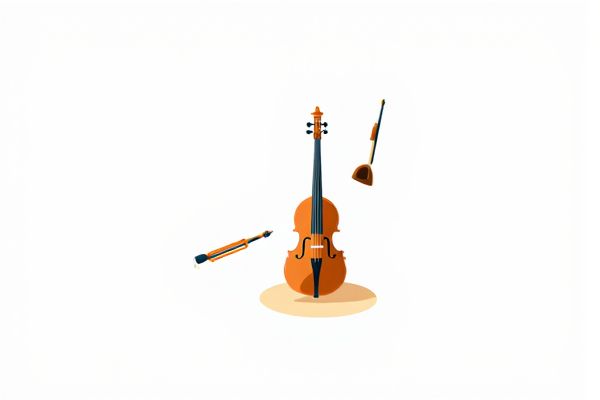
Explore endless creative possibilities with our online random instrument sound generator, designed to inspire musicians and sound enthusiasts alike. Instantly produce unique audio samples from a diverse range of instruments, perfect for music production, sound design, or casual experimentation. Enhance your projects with unexpected tones that stimulate innovation and elevate your sonic palette.
Online tool for random instrument sound generator
We have prepared several samples for a random instrument sound generator that is ready for you to use and customize. You can enter your own list of sounds as well. With a single click, you will receive a randomized list along with one selected value to use.Data Source
Single Result
Multiple Results
Introduction to Random Instrument Sound Generators
Random instrument sound generators utilize algorithmic processes to produce unpredictable and unique audio textures, enhancing creativity in music production. These systems often combine elements of noise synthesis, sampling, and modulation to emulate diverse instrument timbres with varying degrees of randomness. Implementing such generators enables composers and sound designers to explore novel sonic landscapes beyond traditional instruments.
Key Features of Instrument Sound Generators
Instrument sound generators produce diverse tones through digital synthesis or sampling, allowing musicians to create realistic or unique sounds. Key features include multiple sound libraries, customizable waveforms, modulation options, and real-time effects processing that enhance sound design flexibility. Advanced generators also support MIDI input, multi-layered patch creation, and extensive parameter control for precision in audio production.
Benefits of Using Random Sound Generation
Random instrument sound generators enhance creativity by producing unique audio textures and unexpected tones that inspire novel musical ideas. These tools accelerate sound design processes, allowing composers and producers to explore diverse sonic possibilities without extensive manual programming. Incorporating random sound generation increases workflow efficiency and supports experimentation in genres such as electronic, ambient, and experimental music.
Popular Technologies Powering Sound Generators
Popular technologies powering random instrument sound generators include Wave Table synthesis and Sample-Based synthesis, which create diverse and realistic timbres by manipulating prerecorded sound waves. Physical Modeling synthesis uses mathematical algorithms to simulate the harmonic behavior of real instruments, offering dynamic and expressive sound generation. Advanced machine learning algorithms also enhance randomness and creativity by generating novel sound textures based on vast datasets of instrumental audio samples.
Applications in Music Production and Composition
Random instrument sound generators enhance music production by introducing unique timbres and unpredictable textures, expanding creative possibilities for composers. These tools are widely used in experimental music, film scoring, and electronic genres to generate novel soundscapes and inspire innovative arrangements. Integration with digital audio workstations (DAWs) streamlines workflow, allowing seamless manipulation and layering of randomized sounds for dynamic compositions.
Integrating Generators into Digital Audio Workstations
Integrating random instrument sound generators into Digital Audio Workstations (DAWs) enhances music production by enabling the creation of unique, unpredictable textures and timbres. These generators leverage algorithms and MIDI controls within DAWs like Ableton Live, FL Studio, or Logic Pro to produce evolving soundscapes or rhythmic patterns that can be instantly manipulated or automated. Seamless plugin compatibility and real-time parameter modulation facilitate dynamic sound design, expanding creative possibilities for composers and producers.
Customization Options and User Controls
Random instrument sound generators offer extensive customization options, enabling users to tweak parameters such as pitch, tone, duration, and effects to create unique audio textures. User controls often include adjustable sliders, modulation options, and preset variations to fine-tune sound output in real-time. These features enhance creative flexibility, allowing musicians and producers to generate diverse and dynamic instrument sounds tailored to their specific needs.
Inspiring Creativity with Algorithmic Sound Selection
Random instrument sound generators harness algorithmic sound selection to inspire creativity by producing unique and unpredictable audio textures. By combining diverse instrument samples and generative algorithms, these tools enable composers and producers to explore novel sonic landscapes. This fusion of technology and artistry encourages experimentation, fostering innovative musical expressions and expanding creative possibilities.
Top Online and Software-Based Sound Generators
Top online random instrument sound generators utilize advanced algorithms to create diverse and unique audio textures instantly, offering convenience without the need for installation. Software-based sound generators provide enhanced customization, high-quality sound libraries, and integration with digital audio workstations (DAWs) for professional music production. Leading tools like Audiotool, Chrome Music Lab, and Native Instruments' Kontakt combine intuitive interfaces with robust randomization features to inspire creativity for composers and sound designers.
Future Trends in Random Instrument Sound Synthesis
Future trends in random instrument sound synthesis emphasize the integration of AI-driven algorithms and machine learning models to create more diverse and adaptive sound textures. Advances in neural network architectures enable real-time modulation and hybridization of acoustic and synthetic sounds, expanding creative possibilities for composers and sound designers. The adoption of spatial audio technologies enhances immersive experiences by generating dynamic instrument sounds responsive to environmental context and user interaction.
 azrandom.com
azrandom.com